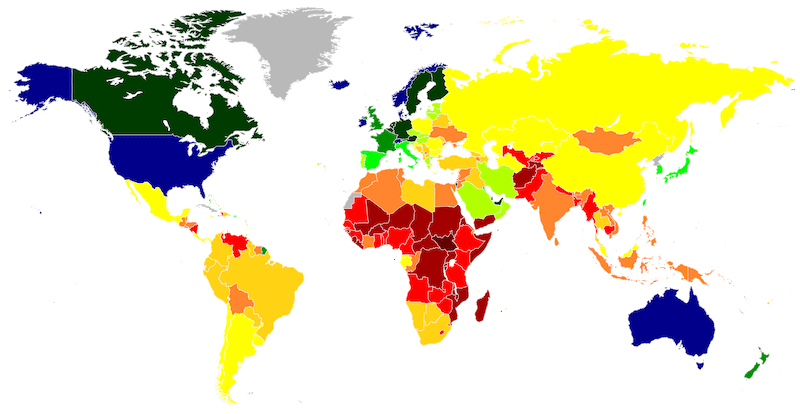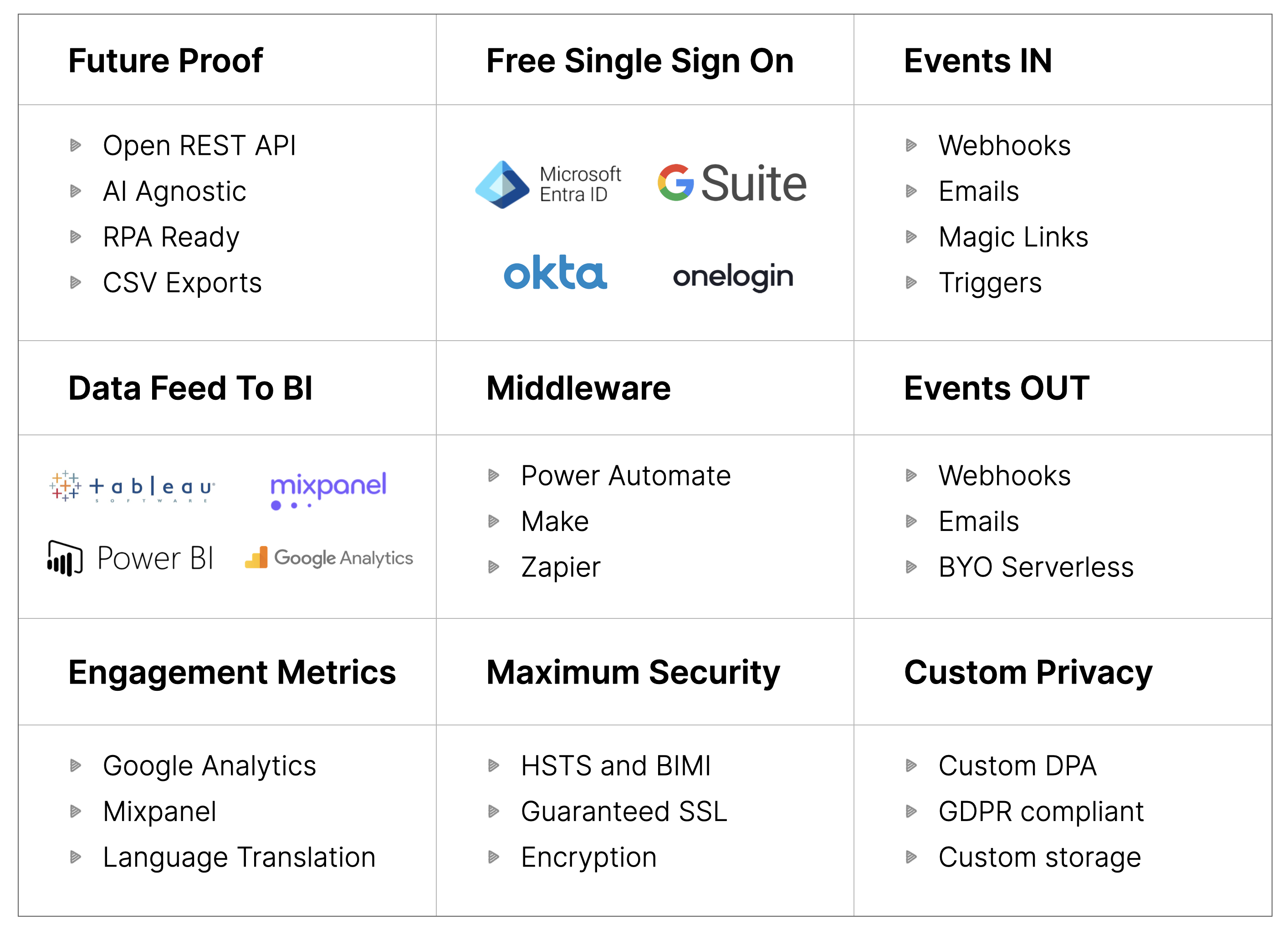The best alternative to Basecamp
Tallyfy evolves your operations from ad-hoc projects to reliable and scalable processes
- Run processes not projects – Uniquely better
- Design – We invented Workflow Made Easy®
- Support – Get expert 1:1 help free – for life
- Discount – For companies in

Tallyfy vs. Basecamp
Basecamp
Basecamp
Basecamp
Basecamp
Basecamp
Basecamp
Basecamp
Basecamp
Here’s why people don’t like Basecamp
This is third party content sourced from the public web. You can verify this content if you wish. See our disclaimer and citations section below.
Stop bleeding 2 hours per person, daily - on busywork
Just 3 simple steps to digitized workflows
Evolve ops from chaotic projects in Basecamp to predictable processes on Tallyfy

Define or upload your template using AI. Optionally add simple if-this-then-that conditionals. Add rich descriptions to capture tribal knowledge on every step.

Launch your process with a form or any other trigger. Invite unlimited guests or coworkers to complete tasks and fill out forms. Tallyfy handles auto-reminders.

Improve your process through feedback and metrics. Add steps run by AI. Automate specific steps if they’re worth it. Practice easy and continuous improvement.
Do you know the cost of busywork?
HEARING THIS?
- How do I do this?
- What's the status of this?
- I forgot we had to do that
- What comes next?
START TALLYFYING
- Every workflow - digitized
- Everyone is happy and efficient
- Newbies are auto-trained
- Grow revenue without chaos
TIME IS EVERYTHING
- US average wage is $44/h
- Nobody enjoys busywork
- Free up time for innovation
- Automate mundane stuff
Tallyfy does not charge for basic services
Need 1:1 help? Unlike costly “professional services” or third-party consultants for Basecamp – Tallyfy guarantees free 25-minute screen-sharing calls with workflow experts for life.
SCHEDULE A CALL

Fair Price Guarantee
Tallyfy is well known because its pricing is discounted using the GDP-per-capita of your primary country. If you qualify you get an even better product with even more value. Choosing Tallyfy over Basecamp is a no-brainer.
Fair Price GuaranteeIntegration and compliance information

- Open REST API
- SOC 2 Type II
- GDPR compliant
- BIMI and HSTS compliant
- Connectors to middleware
- Free SSO for all
- Webhooks and BI feed
- Language translation
- Bank-grade security
- Enterprise MSA & SLA
- More on integrations
What is Basecamp typically used for?
What exactly is Tallyfy and how might it be different?
As Peter Drucker said – “There is nothing so useless as doing efficiently that which should not be done at all.”
Why should companies choose process management over project management?
Does Basecamp potentially have a discount for certain countries?
How does Tallyfy handle process improvement?
As Charlie Munger noted – “It’s not the risk you don’t see that kills you, it’s the risk you think you’ve eliminated that will destroy you.”
How does AI integration differ between Tallyfy and Basecamp?
What are the main potential problems with Basecamp?
How can I see real customer reviews of Tallyfy?
Does Tallyfy offer free help and services?
How do I get started with Tallyfy?
As a Basecamp competitor – Tallyfy excels where it counts
| Tallyfy | Basecamp 4 | |
|---|---|---|
| Specialism | Built specifically for repeatable process workflows with automatic tracking and enforcement of steps. Saves approximately 2 hours per person/day through process consistency and efficiency. Learn about Tallyfy’s process specialization. | Designed for one-off projects and basic team collaboration rather than structured process management. May lack support for repeatable workflows or automation, making standardized operations difficult to scale. See the limitations of project-focused tools. |
| Pricing | Offers Fair Price Guarantee with regional discounts based on local GDP. Includes unlimited guest collaborators and personalized support at no extra cost. View Tallyfy’s transparent pricing. | Uses flat global pricing with no regional discounts. Premium features may require the expensive Pro Unlimited plan ($299/month) or paid add-ons. Advanced permissions potentially only available via the Admin Pro Pack upgrade. Check Basecamp’s pricing structure. |
| Ease of Use | Designed for anyone to use without technical expertise. Features “set-and-forget” templates with automatic task assignments, reminders, and conditional steps to reduce manual effort. Discover Tallyfy’s user-friendly approach. | Consists of multiple separate tools that might overwhelm new users. Could require dedicated onboarding through their “Basecamp Basics” training series to understand platform concepts. See Basecamp’s learning resources. |
| Adoption | Minimal onboarding friction with self-service features that allow users to train themselves. Includes unlimited free guest access for clients and partners, enabling broader adoption. See Tallyfy’s adoption benefits. | May lack built-in process templates for standardizing workflows across teams. Personalized onboarding help potentially only available on the highest-tier plan, leaving most teams without dedicated rollout support. View Basecamp’s limited onboarding options. |
| Security | SOC 2 Type II attested and fully GDPR compliant. Implements modern security protocols including BIMI for verified emails and HSTS for enforced HTTPS. Single Sign-On (SSO) included for all users at no extra cost. Explore Tallyfy’s enterprise-grade security. | No evidence of industry security certifications like SOC 2. May not support SSO/SAML for enterprise authentication integration. No indication of BIMI implementation or explicit HSTS compliance in their documentation. Review Basecamp’s basic security measures. |
| Support | Lifetime free personalized support including 1:1 screen-share sessions with workflow experts (25 minutes each). Complimentary professional onboarding services provided to all customers. Learn about Tallyfy’s comprehensive support. | No complimentary personalized consulting by default. Users often may need to rely on paid third-party experts. Personal onboarding assistance potentially limited to the expensive Pro Unlimited plan. See Basecamp’s tiered support offerings. |
Tallyfy is a uniquely different competitor to Basecamp
Stop bleeding 2 hours per person, daily - on busywork
References and Citations
- 1. Verified Reviewer – Basecamp Review on Capterra, https://www.capterra.com/p/140571/Basecamp/reviews/ – February 2025
- 2. Mayra O – Basecamp Review on GetApp, https://www.getapp.com/project-management-planning-software/a/basecamp/reviews/ – February 2025
- 3. Basecamp Review on Software Advice, https://www.softwareadvice.com/project-management/basecamp-profile/reviews/ – February 2025
- 4. Basecamp Review on TrustRadius, https://www.trustradius.com/products/basecamp/reviews – February 2025
- 5. Marketing Team Review on Reddit, https://www.reddit.com/r/projectmanagement/comments/basecamp_limitations/ – February 2025
- 6. Basecamp Review on ProductHunt, https://www.producthunt.com/products/basecamp-3/reviews – February 2025
- 7. Melanie Latrelle – Basecamp Review on Capterra, https://www.capterra.com/p/140571/Basecamp/reviews/ – February 2025
- 8. Basecamp Review on G2, https://www.g2.com/products/basecamp/reviews – February 2025
- 9. User Review on Reddit, https://www.reddit.com/r/SaaS/comments/basecamp_outdated/ – February 2025
DISCLAIMER OF AFFILIATION, ACCURACY & LIABILITY
This page is an independent, good‑faith comparative review prepared by Tallyfy, Inc. (“Tallyfy”) and is based on publicly available information, third‑party reviews, and vendor materials current as of February 2025. The content is offered “AS IS” for general informational purposes only and does not constitute professional, technical, or legal advice.
- No Affiliation. Tallyfy is not affiliated with, endorsed by, or sponsored by 37signals LLC. “Basecamp” and related logos are trademarks or registered trademarks of 37signals LLC; all such marks appear solely for nominative, comparative reference permitted under the Lanham Act and the doctrine of nominative fair use.
- Dynamic Information. Features, service levels, and pricing change frequently and may have changed since the compilation date. Users should verify current offerings directly with each vendor before making purchasing decisions.
- Opinion & First‑Amendment Protection. All statements constitute Tallyfy’s opinion or commentary, which is protected speech when truthful and non‑misleading.
- No Warranties; Limitation of Liability. Tallyfy disclaims all warranties—express or implied—including accuracy, completeness, merchantability, and fitness for a particular purpose, and will not be liable for any loss or damage arising from reliance on this content.
- Overall Website Terms. Your use of this website is subject to our terms and conditions.